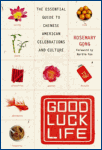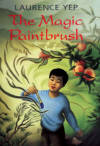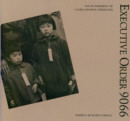|
On February 19, 1942, sixty three years ago this month, President Roosevelt signed Executive Order 9066 which effectively sanctioned the forced removal of Japanese Americans from the western states and eventually lead to their internment in concentration camps.
In preparations for this newsletter I began a search for books that I could feature in remembrance of this dark anniversary. One of the books that I decided to use, Executive Order 9066, has a wonderful introduction written by Edison Uno. For those of you that are unfamiliar with Edison Uno, he was a renowned educator and Japanese American activist during the 60s and 70s (he passed away in the late 70s). For us at AACP, we are proud to say that he was one of our founders too.
Edison Uno fought for many causes. One of his objectives was to make sure that people never forgot about the injustices done to Japanese Americans during World War II. Upon reading Edison's introduction, I began to imagine what he might have thought of President Bush's recent inaugural speech.
Like a mantra, President Bush drove the words freedom and liberty into our thoughts. In a speech that took less than 30 minutes, he used these words over 40 times. For me, I couldn't remember much else, so I had to find the speech online to read it. I must say, that it really reads quite well. Nothing in it was really objectionable and most everyone from all parts of the political spectrum could probably shake their head in agreement with much of the speech.
So what was wrong with the speech was not what it contained, but what it lacked. The inaugural address was probably not the right time for President Bush to be talking about America's historical and current struggles with freedom and liberty, but by not mentioning our imperfections, his eloquent speech came off as hypocritical and unfoundedly self-righteous.
The key word that was under used is "justice." Buried among all the uses of freedom and liberty, President Bush managed to use the word justice only a half dozen times. So why is this word so important that it was placed near the beginning of the Preamble of the United State Constitution? And let's not forget the pledge that I happily led my junior high homeroom class in saying everyday - "...liberty and justice for all."
The framers of the Constitution knew that in order to have a functioning national government, they had to have a functioning judicial system. Like the game "rock, paper, scissors," our government's various branches were designed to prevent any one branch from imposing tyrannical powers over the others. Even in a democracy, you can have tyranny imposed by the majority over minorities.
According to the PBS series Liberty! The American Revolution, James Madison, one of the authors of the US Constitution said, "The biggest danger to our rights today, is not from governments acting against the will of the majority, but from government which has become the mere instrument of this majority. Think about it. That's where the abuse of power comes from. Not the tyranny of the king, but the tyranny of the majority. Wrong will be done as much by an all powerful people as by an all powerful prince."
|
Part of our court system's duties is to evaluate the justness or fairness of laws and actions enacted by the legislative and executive branches of government. The bedrock by which the courts measure fairness is our constitution and the Bill of Rights contained within it. Armed with this foundation, our judicial system can keep in check the powers of the other branches. Keep this in mind the next time you hear someone complaining about the courts thwarting the will of the people (through the legislature or by referendum) or the executive branch. That's part of the courts' duty - making sure that there is "justice for all."
Sadly, even in our great country, there have been many many times when our governmental system failed to be just. The Japanese American internment during World War II is one example when even the judicial system failed to protect against tyranny. We must all constantly be aware, study, and remember this and other injustices so that we can prevent them from ever happening again.
In remembering, it is important to come to grips with the past. No nation can fully understand itself or find its place in the world if it does not look with clear eyes at all the glories and disgraces of its past. We in the United States acknowledge such an injustice in our history. The internment of Americans of Japanese ancestry was a great injustice, and will never be repeated.
President George H. W. Bush
December 7, 1991
It may not have been appropriate for our current President Bush to talk about this in his inaugural speech. Inaugural speeches are usually meant to encourage and uplift. So it is left to us, those in education and the media, to pour the cold water on the idealist and to remind everyone that America is not perfect and that we must learn from our past.
Part of what makes our system great is that it can correct itself. We and governments of the world can only get better through the continued nourishment and support of the institutions that allow for this self-correction. And above even our governments, we must create a space within our own hearts and minds for justice, fairness, love, and compassion.
Those who cherish liberty may learn much, now that the racial hatred and fear of conquest of thirty years have passed. Let us determine to abide by the lessons that EXECUTIVE ORDER 9066 (the book) teaches us - first, that the mere existence of a legal right is no more protection to individual liberty than the parchment upon which it is written, and second, that the mutual love, respect, and understanding of one another are stronger bonds than constitutions.
Tom C. Clark
Associate Justice of the U.S. Supreme Court, Retired
From the epilogue of Executive Order 9066 - written in 1971 for 1st Ed.
Yes, let freedom and "justice" march on.
More links of interest
- NPR State of the Union articles
- NPR discussion on the meaning of freedom
- A biography on James Madison
|





